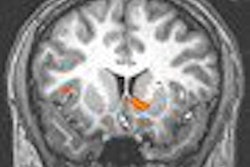Cardiac and MRI specialists have joined together to develop a seven-step guideline for cautiously and effectively imaging patients with pacemakers. They devised this risk/benefit profile after performing a prospective study of 54 pacemaker patients who required MRI or MR angiography (MRA).
"The most recent data suggest that 2.4 million people in the U.S. now have permanent implanted pacemakers. An additional 430,000 individuals are estimated to undergo pacemaker implantation in 2003," wrote Dr. Edward Martin, Frank Shellock, Ph.D., and colleagues in the Journal of the American College of Cardiology.
The reported potential adverse interactions between pacemakers and MRI include heating, rapid atrial pacing, possible damage to the circuitry, and device movement.
But "in certain clinical instances, denying a patient an MRI procedure may have a significant effect on the patient's care," they said (JACC online, Vol. 43:7).
Martin is from the Oklahoma Heart Institute and the University of Oklahoma in Tulsa. Shellock is from the Keck School of Medicine at the University of Southern California and the Institute of MR Safety, Education, and Research, both in Los Angeles. Their co-authors are from the heart institute, as well as Integra CTS, a clinical trials research group in Maple Grove, MN.
For this study, 54 sequential patients underwent 62 MRI/MRA exams at the Oklahoma facility. All studies were performed on a 1.5-tesla Signa CV/i system (GE Healthcare, Waukesha, WI). Continuous monitoring with ECG was performed during the MR exam. The patients were asked to report symptoms, especially if they sensed heat or movement in the area of the pacemaker. The two primary outcomes that were evaluated were "any change" and "any significant change...or a change of >1 voltage" in pacing threshold after MRI.
According to the results, patient symptoms (vibrations, palpitations) were mild and infrequent. None of the exams had to be terminated because of patient complaints, the authors stated, and ECG changes were seen, but without clinical symptoms.
Analysis of the threshold changes revealed 107 leads (48 atrial, 59 ventricular pulse generators), with a change in pacing thresholds in 40 of the 107 leads (37%). However, less than 10% of those changes in the leads were deemed significant. Only two of the 107 leads required a total change in programmed output.
In terms of cardiac chamber analysis, atrial pacing thresholds changed in 39.5% of the cases, but only 12.5% were considered noteworthy. After MRI, 35.6% of the ventricular pacing threshold changed, of which 6.8% were significant. The group theorized that pacing threshold changes occur because of electrode heating.
The direct effects of MRI-related heating were not measured, which is one of the limitations of the study, they said. Also, pacemaker-dependent people were not included in the patient population.
Based on the absence of serious adverse events in this study using 1.5-tesla MR, the group devised the following guidelines:
- Obtain informed consent so that the patient understands there is a potential risk.
- Have emergency resuscitation equipment and a trained professional present during the exam.
- Interrogate the pulse generation immediately before and after imaging.
- Disable the minute ventilation feature.
- Maintain voice contact throughout the procedure.
- Have a physician on-hand who is familiar with subtle pacemaker programming changes.
- Consider sub-threshold output programming, which may minimize induction of ventricular fibrillation.
This MRI protocol is now used routinely at the Oklahoma Heart Institute, according to Martin, who is the director of the Cardiovascular MRI Center. Although many cardiologists perform their own imaging, Martin stressed that these patients required the expert input of both cardiology and radiology.
"I am always in favor of cardiologists and radiologists working together if possible. I have been trained in cardiovascular MRI and...all cardiovascular studies are interpreted by me," he wrote in an e-mail to AuntMinnie.com. "For the studies that come through the center that are not cardiovascular in origin, I send them to be read by a highly respected radiology group here in town. The opportunity for collaboration between the specialties will probably occur most often in the inpatient environment."
By Shalmali PalAuntMinnie.com staff writer
April 12, 2004
Related Reading
Myocardial ischemia, viability made apparent with MR, February 6, 2004
Cine MR cuts acute myocardial infarction exam time, April 3, 2003
Biophan to debut MRI-safe defibrillator lead, May 9, 2002
Of missiles and metallic objects: How to avoid MRI-related hazards, August 21, 2001
Copyright © 2004 AuntMinnie.com


.fFmgij6Hin.png?auto=compress%2Cformat&fit=crop&h=100&q=70&w=100)





.fFmgij6Hin.png?auto=compress%2Cformat&fit=crop&h=167&q=70&w=250)











